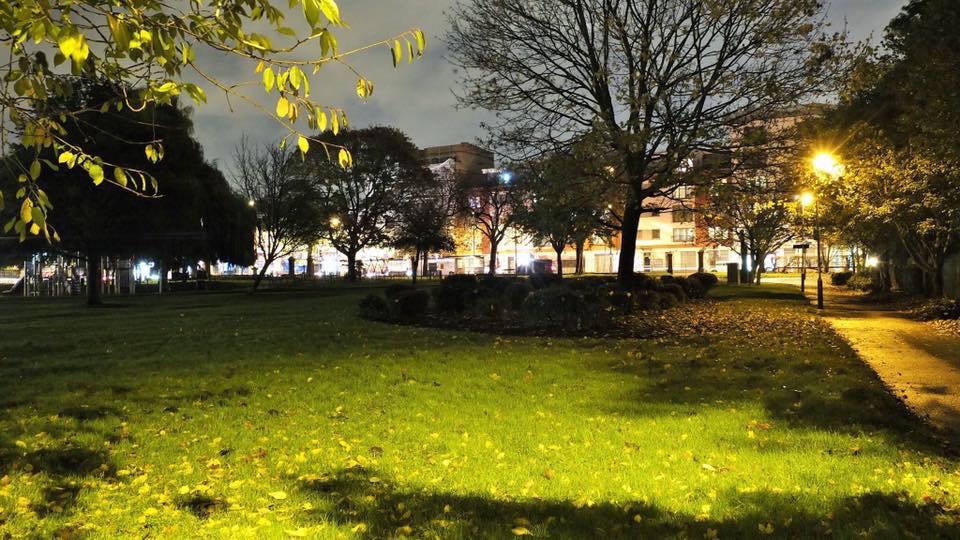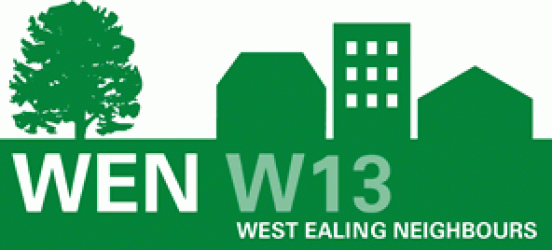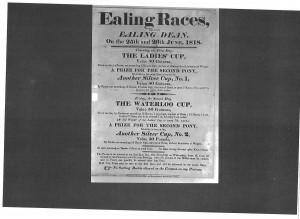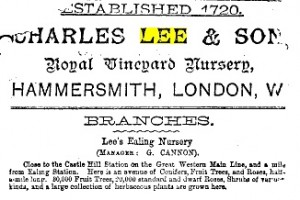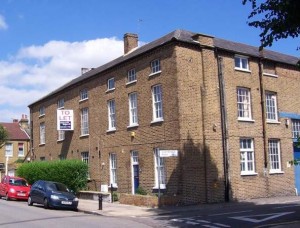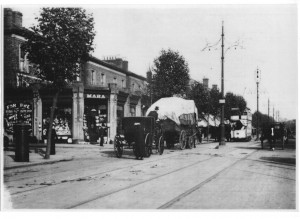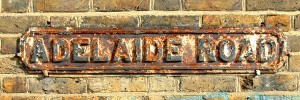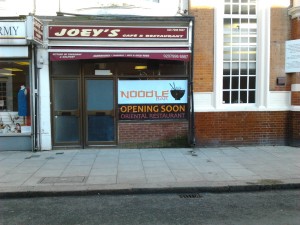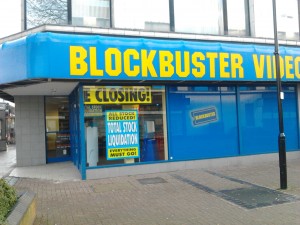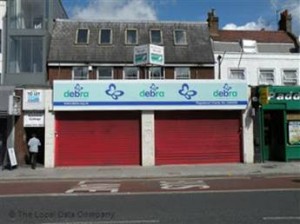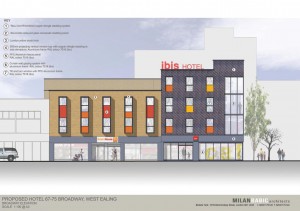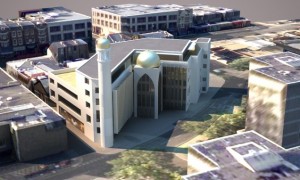Over the years we’ve published a wide range of articles on local history in our newsletters. I keep saying to myself that I must collect them together on our website and make them easily accessible as they are a bit hard to find. In the meantime, I thought I’d publish some of them on our blog as not everyone will have had the chance to read them. This one gives a glimpse in to West Ealing’s history as a market garden for the ever-growing population of London.
In Victorian times much of the land of West Ealing south of the Uxbridge Road was used for agriculture and, in particular, market gardens, nurseries and orchards. Local historian David Shailes has researched the history of West Ealing in considerable detail and this short extract from his work gives a fascinating insight into an important part of our local history and has helped inspire West Ealing Neighbours’ Abundance project.
On the 6th February 1832 the Bishop of London transferred what was then known as ‘Jackass Common’ to the Parish for use as allotments. At the north end of Northfield Avenue there remains one set of allotments. Similar allotments existed on the other side until the early 1980’s when the western allotment site was compulsorily purchased and developed for housing with the Sherwood Close Estate along with sheltered accommodation belonging to what is now the Pathways charity – the owner of the two allotment sites. These two allotments together with Dean Gardens(created in 1911) formed part of ‘Jackass Common’ which was described at the time as being covered in rough furze. The Jackass referred to the annual donkey races held until they were deemed too unruly (what we would now call anti-social behaviour!).
Poster for the annual ‘Jackass Races’ from the early 1800s
The next field along the Uxbridge Road stretched from what is now Dean Gardens to Coldershaw Road and in the 1839/40 Tithe survey was owned by the Loveday Estates and known as ‘Green Man Field’ being used as arable land by Elizabeth Humphreys. Directly beneath this was a field which stretched down to what is now Leighton Road, from appoximately Leeland Terrace in the north to Coldershaw Road in the west. This was farmed by John Meacock of Little Ealing.
Entry from a Victorian trade directory
The first nursery on part of the site which stretched all the way to what is now Leighton Road in the south, was bordered by the allotments in the east, the Uxbridge Road in the north to what is Westfield Road in the west was run by Charles Lee & Sons. This is first mentioned in an advertisement the Kelly’s Directory of 1895/6:
‘Close to Castle Hill Station(West Ealing) on the Great Western Main Line and a mile to Ealing Station there is an avenue of conifers, fruit trees and roses half a mile long – 30,000 fruit trees, 20,000 Standard & dwarf roses. Shrubs of various kinds and also a collection of herbaceous plants.’
They left the site in about 1902 when the Loveday Estates sold their land for housing development. They moved for a few years to a site on the Uxbridge Road at Ealing Common, before disappearing. But they left us with the street names Leeland Road/Terrace.
From what is now Melbourne Avenue to St James Avenue was occupied by Charles Steel & Sons. The Steel family had a market garden business in Ealing from about 1837, but the first entry in a trade directory is in Mason’s (1853) on land at Boston Gardens, Boston Road. This was tucked behind Boston Farm and was on part of the land which forms the allotments to west end of Northfields Recreation Grounds. They were still here in the 1860 directory. Charles Steel Jnr is shown as having a market garden in Gunnersbury in the 1877 directory and by 1878 has a further garden at Castle Bar Hill.
The Steel Fruit Warehouse
By 1886 the first street of houses has appeared in Northfields and this was Northfield Road and at the western end Charles Steel & Sons had premises on the northside. These premises are still extant and have always looked out of place with the rest of the area, as they are a three-storey warehouse type building which incorporates Ivy Cottage.
In the 1891 census this was occupied by G.A.Simmonds – Agricultural Foreman and an additional location known as Steel’s Farm was occupied by H.Hallet – Gardeners Foreman. Quite a few of the inhabitants of Northfield Road were connected with gardening or were described as agricultural labourers.
Lido Junction circa 1905
By 1894/5 Charles Steel is living at 228 Uxbridge Road, which was virtually opposite the northern end of his market garden. In his obituary in the Middlesex County Times in July 1911 it states that he had a market garden which stretched from the Uxbridge Road in the north to the District Railway in the south. This is more or less confirmed by the Ealing General Rate book in the GLO dated 4/4/1889. He died on 19th July 1911 at the age of 74 and had lived all his life (bar the first 3mths) in Ealing – initially at Boston Gardens.
In the pursuit of his profession he had visited Australia, which in the days of no aviation was no mean feat. He served for the first year of the new Borough as a Councillor (1902) and stood down, as in those days the Council was not re-elected en-masse every 4 years, but a proportion of ward councillors stood for re-election each year. He did not stand for re-election.
Adelaide Road is one of the ‘Australian- named’ roads on land developed by the Steel family
The ordnance survey map for 1894/5 clearly shows trees to the west of Steel’s warehouse, which I have presumed were orchards as Charles Steel’s business is described as a Fruit Grower. As his market garden shrank in size he retained these premises and appeared to have moved out by 1912 the year after his death.
He had let space to Albert Harris a Horticultural builder from 1907. Initially after Steel’s death only Harris is shown as the occupant. In 1926 the occupants are Sanders who are using them as a Furniture Depository.
When Charles Steel died his Estate was worth £59,706 17s 6d (Somerset House). Charles had a brother Richard J. who was an Auctioneer and Land Agent who initially had an office in Hanwell (Kelly’s Directory 1887/8)and is also shown as a Market Gardener at Boston Gardens. By 1894/5 he had given up his Hanwell offices to establish his Auctioneering business at Southall market. He was still living at Boston Gardens when he died on 12/8/1916. His Estate on his death was worth £26,115 5s 1d (Somerset House).
(Our newletters have three articles about the origins of local street names. This link is to the first of these articles. The July and September newsletters have the two subsequent articles on street names.)
